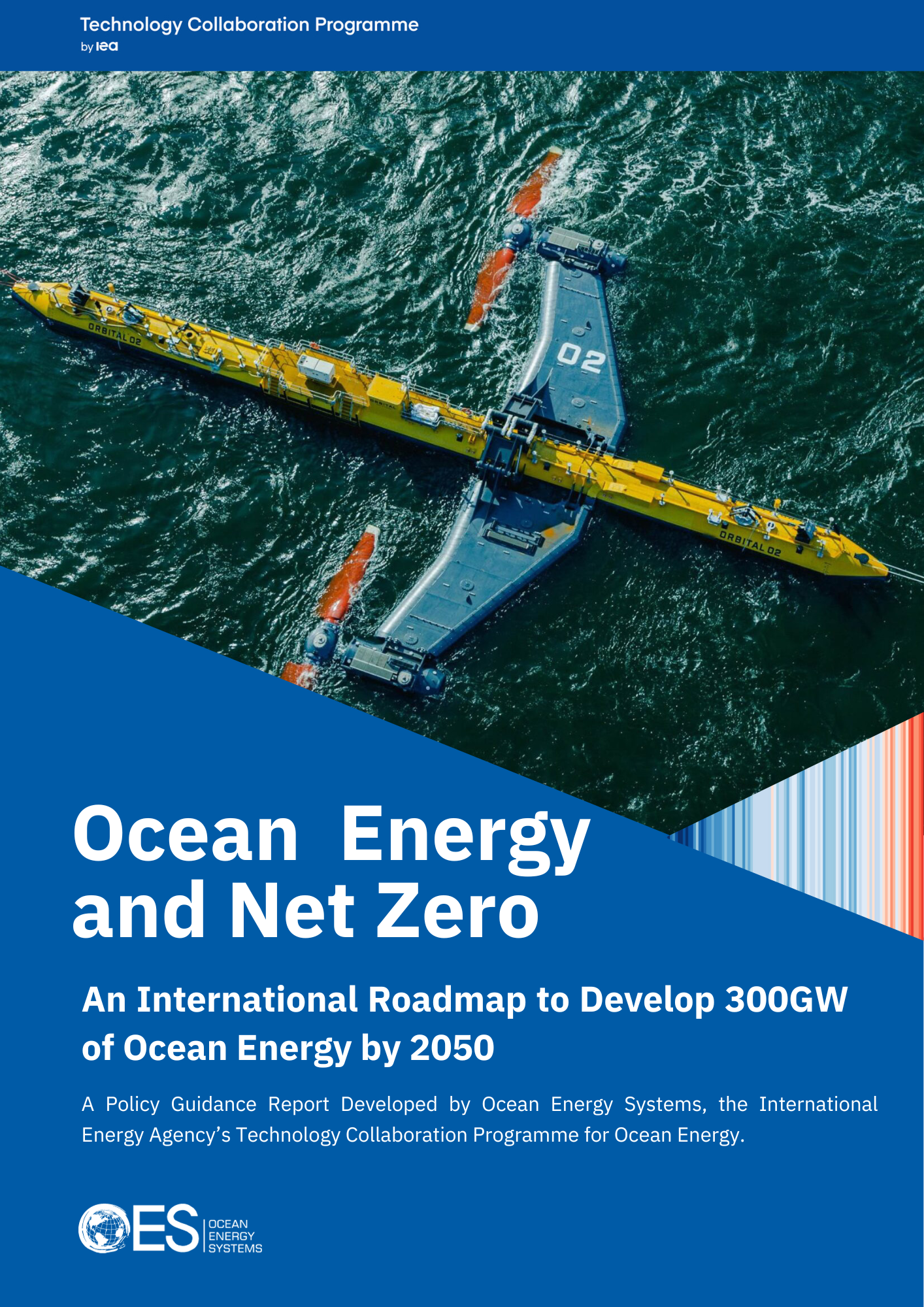d to wave and tidal stream, is poised to play a pivotal role in the global energy landscape. By 2050, the ocean ene
f 300GW. This ambitious target is expected to generate 680,000 jobs, contribute $340 billion in gross value added (GVA), and prevent over 500 million tonnes of carbon emissions, underlining the sector's potential to drive socio-economic growth and combat climate change.
Matthijs Soede, Chairman of the IEA-OES, adds, “this report gives valuable insights into the significant benefits that are associated with sustained and continued innovation. However, bringing a technology to the market is not only a matter of climbing the TRL ladder, it also requires an internationally coordinated policy and regulatory framework. I fully believe that this report is not just food for thought, but it is also food for action and should provide clear guidance for the future development of the international ocean energy sector.“
Henry Jeffrey, IEA-OES delegate for the UK, affirms, "It is clear from this report that both wave and tidal stream have a key role to play in the global energy transition. It has also shown that sustained market support, coupled with the optimal balance of innovation funding, will be vital for the wider sector to achieve its full potential and enable it to unlock a range of socioeconomic, energy system and environmental benefits. It is critical for international governments to develop clear policy frameworks to accompany these long-term deployment forecasts, thus ensuring that the ocean energy sector achieves its potential on a suitable timescale. "
The key policy recommendations from the IEA-OES Roadmap, designed to inform the reader on how the forecasts and targets presented throughout this report can be achieved, are as follows:
1. Market support is the foundation of a comprehensive policy programme:
Led at a country-by-country level,
the immediate application of a long-term and sustained market support is key to strengthening and accelerating deployments in the ocean energy sector. The exact form of which a policy pull mechanism takes should be decided at a national level, however ensuring it is applied immediately, continuously and visibly is key to ensuring that all nations feel the shared obligation to follow a similar route. A market support mechanism, supporting a technology that has achieved an optimum cost reduction rate,
should be considered a priority of any government wishing to establish a commercial ocean energy sector and is vital to stimulating ocean energy deployment across the globe.
2. Accelerated innovation is key to enabling long-term cost reductions:
A well-funded and sustained technology innovation programme, actively pursuing international collaboration,
is vital to ensuring that technological innovation occurs at a significant rate and helps to
lower the overall investment required to provide a long-term market support mechanism. Any technology innovation programme should be focussed to target identified challenge areas that will increase overall device performance and reduce development, deployment maintenance and disposal costs. Technology innovation programmes are well-suited for international collaboration, where
active engagement in collaborative learning across multiple nations is essential to drive accelerated cost-reductions.
3. An optimal balance of market support & technology innovation funding must be struck:
While long-term support for market support mechanisms is key to achieving a commercial ocean energy sector, the overall cost of attaining this target can be
massively reduced through the application of sustained innovation, achieved through coordinated support for technology innovation programmes. Striking the correct balance between both market support and technology innovation programmes is a complex task,
but it is vital to minimising the overall associated costs.
4. Immediate action on infrastructure development is vital:
While existing infrastructure is well-positioned to handle the short-term requirements of the sector, the
rapid expected growth will require large-scale global infrastructure development projects to begin immediately. Opportunities to share space, resources and skills with the offshore wind sector should be actively investigated, given the significant overlap in technology. This large-scale global infrastructure development will need to begin immediately, to ensure that long lead times and unexpected delays, potentially resulting from a shortage of workers or raw materials,
do not hinder the progress of the overall ocean energy sector.
5. The regulatory and legislative framework should help, not hinder:
The ocean energy sector should be
underpinned by a robust and efficient regulatory and legislative framework that provides the levels of support required to ensure that sector growth happens in line with forecasted timelines. The role of an effective regulatory and legislative framework in helping to overcome these challenges efficiently
should not be understated. Where possible, individual nations should seek to form collaborative frameworks that acknowledge and incorporate instances of best practice, identified standards, clear consenting and make use of novel processes, such as adaptive management.
The speed at which the global energy system will need to transform is unprecedented, a challenge exacerbated by the ever-diminishing time-scales under which this can be accomplished. There is now a growing understanding of the vital role that wave and tidal stream will play as one of the many renewable technologies that will comprise this new energy system.
Despite the clear socio-economic benefits and Net Zero potential on offer, wave and tidal stream technologies face a number of challenges in their bid to reach commercial deployment. The high-level analysis, key results and policy recommendations contained within this IEA-OES Roadmap present a clear pathway by which these potential benefits can be realised and these challenges overcome. Harnessing the desire and momentum for a global Net Zero energy system and transforming it into proactive, visible and coordinated policy support mechanisms is the first step on this journey. It is time for the leading nations in the ocean energy sector to ensure that innovation and collaboration places the sector at the heart of the global drive for Net Zero.
Read the report
here.


